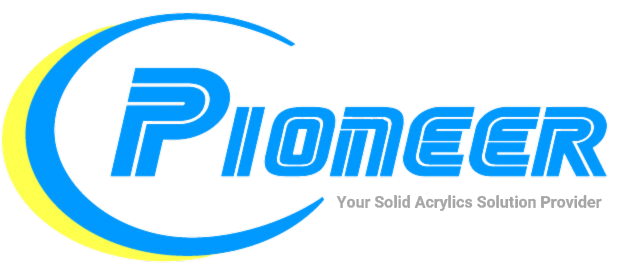Acrylic resins may be defined as a whole group of inter-related thermoplastic or thermosetting plastic substances. These chemical products are basically derived from the same source material, which is methacrylic acid, acrylic acid or any other similar compounds. Polymethyl acrylate, for instance, is an acrylic resin that is widely used in a near completely emulsified form for a wide variety of uses such as textile finishes, lacquer, and powerful adhesive compounds. Furthermore, when these acrylic resins are mixed with soft or hard clay, they can be used to gloss paper as well.
Then there is another acrylic resin that is known as polymethyl methacrylate. This is primarily used to make different types of hard plastics that are able to transmit light. This is because it is as transparent as clear glass, which makes it ideal for creating a translucent effect.
Synthetic acrylic resin applications are quite widespread. They are also used to create human and animal teeth as well as denture base materials. This family of resins also includes glass ionomer cement, dental wax artificial teeth resin, zinc oxide eugenol cement, and many other equally useful materials.
History of acrylic resin
Acrylic resin in its raw form was first synthesized circa 1900 by a Dr. Otto Rohm. This is a truly unique mixture of plastic and other chemicals that offers long-term weatherability, optical clarity, stiffness, high density, and innate toughness.
In short, the invention of Acrylic resins has made it considerably easier for people working in the construction industry to effectively build various structures that would be able to endure really harsh weather conditions, regardless of the external environment. This invention managed to effectively transform and in fact revolutionize the entire construction sector just about all over the world. But this was only the beginning, and as people started understanding the importance of this amazing invention, it was not long until many people essentially realized that there was a lot more potential in this little chemical than most people had at first realized.
As a matter of fact, it was because of daring individuals that were willing to push the technological threshold, that acrylic resin was used in a medical application for the very first time. That being dental services. And to this very day, it is still widely used by dentists to create dentures and otherwise ease the discomfort and pain experienced by their patients.
As a matter of fact, even today, acrylic resin is widely considered to be a dentist’s best friend. This is primarily because of the large number of different ways that it can help them. Let us see how this resin can be used by dentists to heal people plagued by dental problems.
It makes an ideal cavity filling material
The advent of rapidly expanding cavities in a person’s mouth was a perennial problem that has plagued mankind since long. However, there was little a dentist could do about it. It was a frustrating experience for both the doctor as well as his patient since there was little that could be done to solve the problem at hand. And patients continued to writhe in pain as their cavities steadily grew worse. Using elements such as gold and silver did not always work, and the only viable option was to prescribe painkillers so that they could live relatively pain-free lives. However, painkillers were just the treatment of the symptoms, rather than the actual causes themselves. This meant that they were a coping mechanism at best, rather than a more permanent solution.
But that was before the introduction of acrylic resin in the field of dental treatment. Using them as a filler, basically gave dentists the much needed tools that they needed to help finally cure the overall cause of the misery as well as the pain that their patients had to endure, on a daily basis.
This was a twofold benefit for the patients who would opt for dental acrylic resin. Not only were they able to find the relief that they craved from their pain once and for all, but at the same time they finally had a permanent solution that actually worked for once. They did not have to be completely dependent on painkillers alone to provide them a modicum of relief that was temporary, at best. This is because painkillers dulled the pain receptors of the mind and so the patient did not even realize how much the disease had worsened. Reaching a point where it was too late to do anything about it.
Now, thanks to dental acrylic resin, patients have the undisputed comfort of knowing that their teeth will no longer suffer from the irreversible damage, the kind that might leave their teeth in absolutely terrible condition. Even if they did reach that point of decay, they could still request their dentist to try and use acrylic resin to help fix their teeth from deep within the inner portions that had always been very difficult to reach and subsequently treat.
As a matter of fact, many such dental acrylic resins and materials have been of such great quality that they are still being used as of today, and are still widely considered to be perhaps one of the single most effective means of dealing with any cavity related problems, as such.
Properties, types, and various other application of acrylic resins
Apart from its medical use, one of the single biggest field of application for various types of acrylic resins that have been manufactured via the process of solution polymerization; has been solvent-borne paints.
However, several products that have been made by such solution polymerization also generally lend themselves to their own production of different waterborne but secondary powder coatings and acrylic dispersions.
Different types of acrylic resins applications that are utilized for solvent-borne coatings
Many solvent-borne coatings are based on different types of acrylic resins that are almost always quite exclusively used in the kind of paints that generally form thin coatings and films, via the crosslinking process.
In fact, some of the most important crosslinking reactions that are used for industrial applications are those made of methylol acrylamides (that is self-crosslinking). Apart from that, another group consists of resins that are created as a reaction between hydroxyl groups and amino resins or for that matter, even polyisocyanates that generally contain free or even blocked isocyanate groups.
There are of course, other crosslinking reactions as well, that have also played an important, albeit minor role. As a matter of fact, when acrylic panels and resins were initially developed, the various resin solutions were widely used to make the kind of paints that generally dry physically (such as thermoplastic acrylic resins, TPAs).
Thermoplastic acrylic resin applications
From the 1920s onwards, many, if not most industrial coatings had been quite predominantly formulated with the help of a strong cellulose nitrate binder. This binder was typically combined with different plasticizers and later on as technology improved, with alkyd resins.
By and large, many such paints were easily distinguishable from their other non-acrylic counterparts by the near universal ease of application, as well as fast physical drying properties, especially at ambient (external environment) temperatures, coupled with some really great pigment loading properties (ranging from moderate to high brilliance).
Acrylic resin applications throughout the ages
The 1930s was a landmark decade due to the fact that it saw the invention and subsequent launch of many different ‘stoving enamels,’ that were used for various automotive OEM paints as well. These enamels were been based on amino and alkyd resins. Which meant that they could also confer a higher degree of resistance to the environment.
The advent of the 1940s bought with it the necessities of total war, and this led to massive technological developments in all spheres of chemical sciences. It was in this momentous decade that thermoplastic acrylic resins were developed for many different coatings that basically acted to form thick and thin films, at ambient temperatures.
Such thermoplastic acrylic resins were mass produced by both suspension and solution polymerization. That is, the resins mainly contained methyl methacrylate, or for that matter, its many combinations with various other methacrylic esters. These were quite useful for adjusting to glass transition temperatures. As a matter of fact, many such paints might also contain different plasticizers since they are capable of drying via physical means only. Such paints are also quite notable for their fairly rapid drying at ambient temperatures in the initial stages as well as relatively good weatherability even in harsh external environments. In other words, such paints are not prone to yellowing easily. On account of such great properties, various types of thermoplastic acrylic resins have been widely used for different types of automotive repair finishes, specifically in the U.S where such acrylic resins are generally used for physically drying different types of clear coats.
Impregnation of mineral substrates
There is another vast field of applications for different thermoplastic acrylic resins. This is the impregnation of various mineral substrates. In this case, such resins serve as a sort of primer sealer for plastered and concrete masonry before the final application of the finishing paints on the walls.
In fact, such thermoplastic acrylic resins generally form the very basis for various strippable varnishes that in turn also provide temporary protection for a large number of metal surfaces.
In addition to the above, most such acrylic resins also have wide ranging applications in the heavy-duty coating of paper (such as overprint varnishes for instance), plastic parts and even treated leather. Moreover, many experts also recommend that different acrylic resins that contain methacrylic esters with long side-chains should also be added (in pre-determined quantities) to different alkyd paints in order to accelerate the initial drying speed of the paint.
Different acrylic resins with methylol acrylamides
The 1950s witnessed the advent of various newly developed coating resins that actually utilised this useful crosslinking mechanism. In the initial phase, many different copolymers were manufactured from acrylamide or methacrylamide (or their many different blends thereof), that were then subsequently methylated with formaldehyde.
Due to the fact that the resultant methylol ethers are quite unstable and therefore actively react with each other even at ambient temperatures, the whole process was modified (just like the amino resins) so that the methylol ethers would easily be etherified with different mono-alcohols. These base level alcohols were primarily butanols, which were already being used as a sort of process solvent/s.
In the 1950s many combination resins for amino resins played an important plasticizing role, and at the same time it was noticed that they could also easily react via crosslinking (that is co-crosslinking to be precise) with many free hydroxyl groups that are also present in the functional groups of the main family of amino resins. Furthermore, this decade also foresaw the invention of the industrial production of hydroxy-functional acrylic monomers by making either acrylic acid or methacrylic acid (or both) react with ethylene oxide and propylene oxide.
This was considered to be a groundbreaking development due to the fact that numerous copolymers were now being produced from such hydroxy-functional monomers as well as other acrylic or methacrylic esters, in collusion with many other comonomers, that were quite rapidly developed in the 1960s. Which then went on to evolve into one of the single most important class of resins, that is solution polymerization products, along with a myriad of different applications that such products have in today’s world.
Conclusion
In the light of the above, we can easily see that acrylic resin applications are not just widespread but are steadily increasing to this day. From construction to light transmission, from medical and dental applications to automotive paints, the world of acrylic resins has always been a significant factor in our technological development.

